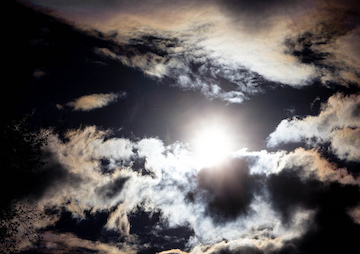Nuclear Weapons, Climate Change, and the Prospects for Survival
For nearly 70 years, security for the human population has not been a leading concern of policymakers. Dennis Skley / CC BY-ND 2.0
1
2
3
Dennis Skley / CC BY-ND 2.0
1
2
3
Aside from that, Russia understands as well as China (and U.S. strategists, for that matter) that the U.S. missile defense systems near Russia’s borders are, in effect, a first-strike weapon, aimed to establish strategic primacy — immunity from retaliation. Perhaps their mission is utterly unfeasible, as some specialists argue. But the targets can never be confident of that. And Russia’s militant reactions are quite naturally interpreted by NATO as a threat to the West.
One prominent British Ukraine scholar poses what he calls a “fateful geographical paradox”: that NATO “exists to manage the risks created by its existence.”
The threats are very real right now. Fortunately, the shooting down of a Russian plane by a Turkish F-16 in November 2015 did not lead to an international incident, but it might have, particularly given the circumstances. The plane was on a bombing mission in Syria. It passed for a mere 17 seconds through a fringe of Turkish territory that protrudes into Syria, and evidently was heading for Syria, where it crashed. Shooting it down appears to have been a needlessly reckless and provocative act, and an act with consequences.
In reaction, Russia announced that its bombers will henceforth be accompanied by jet fighters and that it is deploying sophisticated anti-aircraft missile systems in Syria. Russia also ordered its missile cruiser Moskva, with its long-range air defense system, to move closer to shore, so that it may be “ready to destroy any aerial target posing a potential danger to our aircraft,” Defense Minister Sergei Shoigu announced. All of this sets the stage for confrontations that could be lethal.
Tensions are also constant at NATO-Russian borders, including military maneuvers on both sides. Shortly after the Doomsday Clock was moved ominously close to midnight, the national press reported that “U.S. military combat vehicles paraded Wednesday through an Estonian city that juts into Russia, a symbolic act that highlighted the stakes for both sides amid the worst tensions between the West and Russia since the Cold War.” Shortly before, a Russian warplane came within seconds of colliding with a Danish civilian airliner. Both sides are practicing rapid mobilization and redeployment of forces to the Russia-NATO border, and “both believe a war is no longer unthinkable.”
Prospects for Survival
If that is so, both sides are beyond insanity, since a war might well destroy everything. It has been recognized for decades that a first strike by a major power might destroy the attacker, even without retaliation, simply from the effects of nuclear winter.
But that is today’s world. And not just today’s — that is what we have been living with for 70 years. The reasoning throughout is remarkable. As we have seen, security for the population is typically not a leading concern of policymakers. That has been true from the earliest days of the nuclear age, when in the centers of policy formation there were no efforts — apparently not even expressed thoughts — to eliminate the one serious potential threat to the United States, as might have been possible. And so matters continue to the present, in ways just briefly sampled.
That is the world we have been living in, and live in today. Nuclear weapons pose a constant danger of instant destruction, but at least we know in principle how to alleviate the threat, even to eliminate it, an obligation undertaken (and disregarded) by the nuclear powers that have signed the Non-Proliferation Treaty. The threat of global warming is not instantaneous, though it is dire in the longer term and might escalate suddenly. That we have the capacity to deal with it is not entirely clear, but there can be no doubt that the longer the delay, the more extreme the calamity.
Prospects for decent long-term survival are not high unless there is a significant change of course. A large share of the responsibility is in our hands — the opportunities as well.
Noam Chomsky is institute professor emeritus in the Department of Linguistics and Philosophy at Massachusetts Institute of Technology. A TomDispatch regular, among his recent books are Hegemony or Survival and Failed States. This essay is from his new book, Who Rules the World? (Metropolitan Books, the American Empire Project). His website is www.chomsky.info.
Follow TomDispatch on Twitter and join us on Facebook. Check out the newest Dispatch Book, Nick Turse’s Next Time They’ll Come to Count the Dead, and Tom Engelhardt’s latest book, Shadow Government: Surveillance, Secret Wars, and a Global Security State in a Single-Superpower World.
Copyright 2016 Valeria Galvao Wasserman-Chomsky Your support matters…Independent journalism is under threat and overshadowed by heavily funded mainstream media.
You can help level the playing field. Become a member.
Your tax-deductible contribution keeps us digging beneath the headlines to give you thought-provoking, investigative reporting and analysis that unearths what's really happening- without compromise.
Give today to support our courageous, independent journalists.






You need to be a supporter to comment.
There are currently no responses to this article.
Be the first to respond.